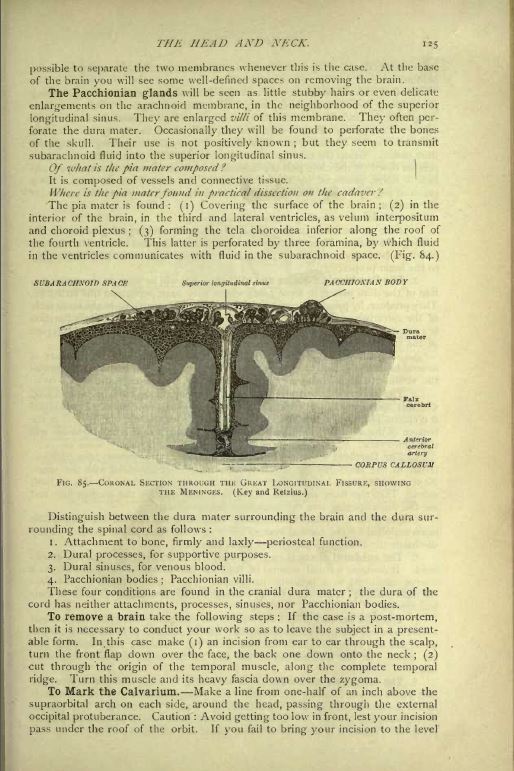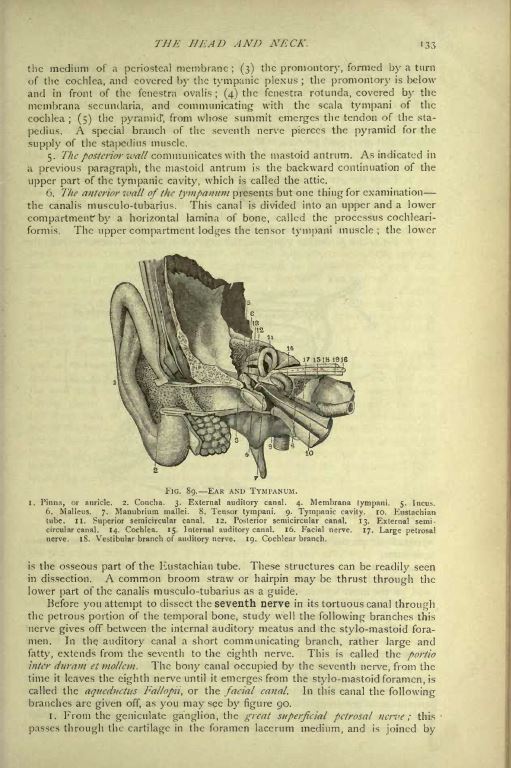(SAMPLE PAGE VIEWS)




 |
Embalming is the art and science of
preserving human remains by treating them (in its modern
form with chemicals) to forestall decomposition. The
intention is to keep them suitable for public display at a
funeral, for religious reasons, or for medical and
scientific purposes such as their use as anatomical
specimens. The three goals of embalming are sanitization,
presentation, and preservation (or restoration). Embalming
has a very long and cross-cultural history, with many
cultures giving the embalming processes a greater religious
meaning.
This collection on CD
contains 22 Books, all in PDF format.
Please note that this collection contains scans of old books, some
of which were in poor condition before being rescued and digitized for
posterity. This means that you may see some pages with creases
and tears that show up in the scans.
Publications List:
|
A Manual of Autopsies: Designed for the
Use of Hospitals and for the Insane and Other Public
Institutions (1892), by I.W.
Blackburn, 122 Pages |
|
A Practical Guide for Making
Post-Mortem Examinations, and for the Study of Morbid Anatomy,
With Directions for Embalming the Dead, and for the Preservation
of Specimens of Morbid Anatomy, By A.R.
Thomas (1873), 343 pages |
|
An Essay on Egyptian Mummies: With
Observations on the Art of Embalming Among the Ancient Egyptians
(1825), by A.B Granville, 91 Pages |
|
Anatomy and Embalming (1913),
by Albert John Nunnamaker, 389 Pages |
|
Autopsy of President Kennedy
(1965) - 123 Pages |
|
Clarke's text-book on embalming
[electronic resource] : illustrating and describing the anatomy
of the human body as is needed by the professional or expert
embalmer, (1885), by John Clarke, 190
pages |
|
Embalming Ebenezer: An Ethiopian Farce
in One Scene – By Herbert P. Powell
(1916) – 20 pages |
|
History of Embalming and of
Preparations in Anatomy, Pathology, and Natural History;
including an Account of a New Process for Embalming,
By J.N. Gannal (1840), 275 pages |
|
Intracranial tumors among the insane; a
study of twenty-nine intracranial tumors found in sixteen
hundred and forty-two autopsies in cases of mental disease
(1903), by I.W. Blackburn, 223 Pages |
|
Nekpokedeia or, The art of embalming
(1705), by Thomas Greenhill, 451 pages |
|
Post-Mortem Examinations Methods and
Technique (1900), by John Caven, 42
Pages |
|
Post-Mortem Pathology A Manual of
Post-Mortem Examinations and the Interpretations to be Drawn
Therefrom; A Practical Treatise for Students and Practitioners
(1906), by Henry Cattell, 676 Pages |
|
Post-mortems; what to look for and how
to make them with sections on infanticide, poisons,
malformations, etc (1885), by AH Newth,
141 Pages |
|
Practical Anatomy Including a Special
Section on the Fundamental Principles of Anatomy,
By W.T. Eckley (1899), 499 pages |
|
Practical Pathology A Manual of Autopsy
and Laboratory Technique for Students and Physicians
(1911), by Aldred Warthin, 349 Pages |
|
Practical Pathology Including Morbid
Anatomy and Post-Mortem Technique
(1914), by James Miller - 472 Pages |
|
Special Autopsy Methods (1918), by William Maccallum - 17 Pages |
|
The Art and Science of Embalming :
Descriptive and Operative – By Carl
Lewis Barnes (1896) – 572 pages |
|
The Champion Text Book on Embalming
(1897), by Eliab Meyers, 451 Pages |
|
The Essentials of Anatomy, Sanitary
Science and Embalming : A Series of Questions and Answers on The
Subject of Embalming and Collateral Science Including all of The
Essentials and None of the Non-Essentials of These Science,
By A. Johnson Dodge (1906), 192 pages |
|
The Technique of Post-Mortem
Examination
(1894), by Ludvig Hektoen, 198 Pages |
|
Veterinary Post-Mortem Examinations
(1891), by AW Clement, 72 Pages |
|











